 Jeff Zurschmeide
.
September 29, 2023
.
Features
Jeff Zurschmeide
.
September 29, 2023
.
Features

Ford has been out of the mid-size truck business in America since they discontinued the Ranger back in 2011. But mid-size buyers choose smaller trucks for a reason, and now Ford is back to meet that demand with an all-new and updated Ranger. “Street Trucks” went to San Diego recently for the first shot at driving, wheeling, towing and hauling with the new Ranger, and here’s what we learned.

The new Ranger is remarkably simple. There’s one engine, two body styles and three trim levels. That’s it.
The engine in the new Ranger is the 2.3L EcoBoost four-cylinder. Before you start wishing for a V-6, take note that this plucky little four-banger delivers 270 hp and 310 ft-lbs of torque. That’s comparable overall performance to everybody else’s V-6, and to get higher torque you have to go with a turbo-diesel.
Plus, the 10-speed automatic that’s been borrowed from the Mustang does a great job of maximizing the power from the EcoBoost. You can choose between rear-wheel-drive and four-wheel-drive, but you still get the same engine and transmission with both systems. The result is that the Ranger has plenty of power to pull out and pass, get on a freeway, or haul a heavy load.
Ford offers two cab and bed combinations with the Ranger. You can have the extended SuperCab with two small reverse-opening “coach doors” or a full four-door SuperCrew cab. The SuperCab has a 6-foot bed, and the SuperCrew has a 5-foot bed. Both versions ride on the same wheelbase.
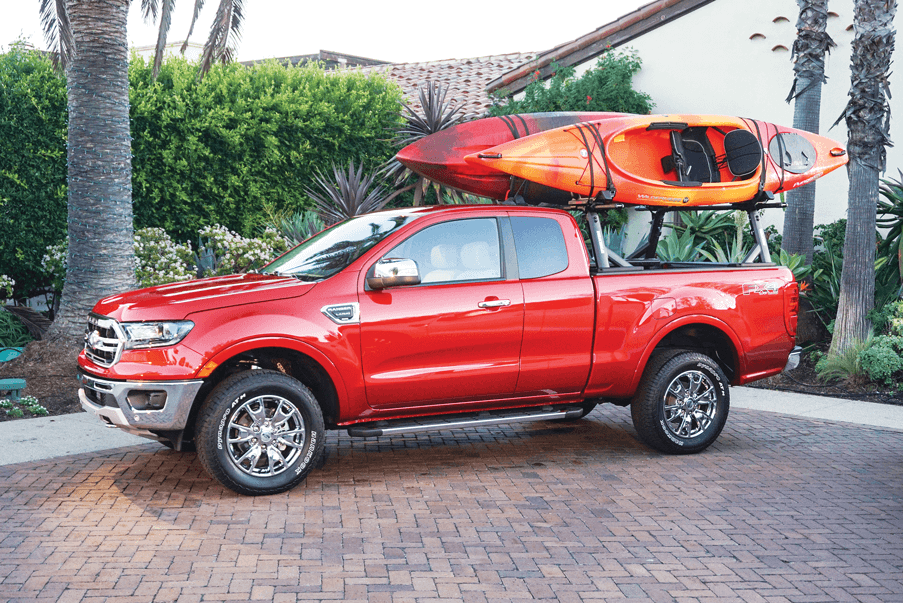
The SuperCab is handy for stowing things, but it’s going to be tight for anyone but small children in the back seats. There are two bucket seats back there, and the seat cushions pop out to reveal storage bins in the floor. You can save a few bucks with the available rear seat delete option, but it’s just as easy to take out the seats if you want a secure, dry place for your stuff.
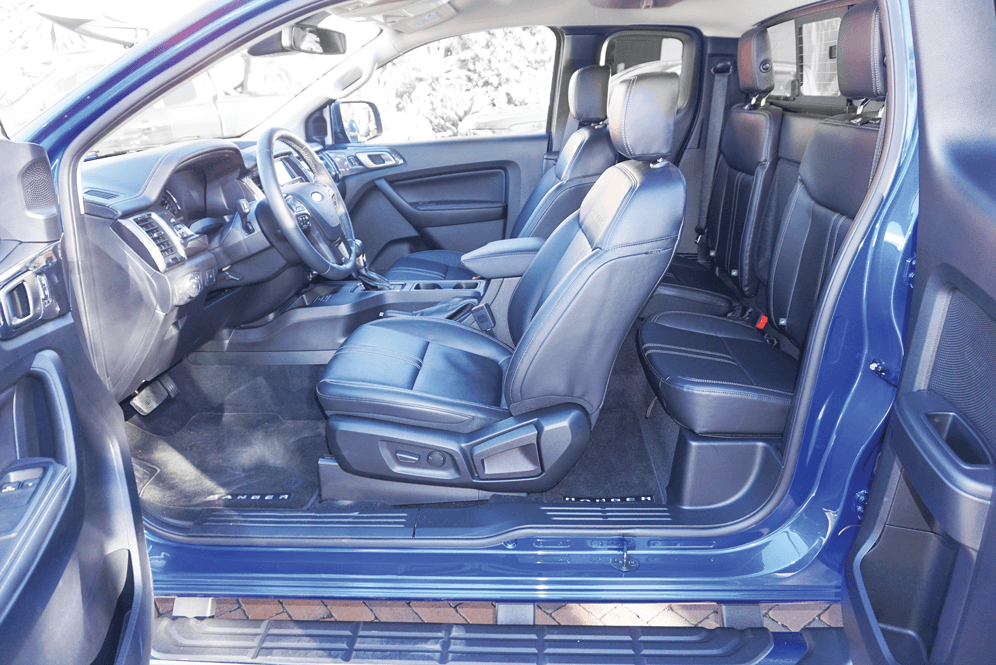

The SuperCrew has more space in the back, and a three-across bench seat, but as a mid-size it’s still pretty close quarters back there. If you haul adults on a regular basis, be sure to climb in the back as part of your test drive to make sure it’s going to work. The thing about the SuperCrew is the short 5-foot bed— that’s a tradeoff that not everyone can make.
The three trim levels in the Ranger can be loosely translated to Work Truck, Occasional Truck and Daily Driver. The XL trim is designed for work. You get rubber floor covering, cloth or vinyl seats, and a basic AM/FM radio. What you don’t get is a penalty box with respect to safety and comfort features or driveline. The XL trim comes with a rear-view camera, automatic emergency braking, trailer sway control, air conditioning and adjustable lumbar support.
However, if you change anything about the base truck, you get bumped up a notch to a 4.2-inch LCD SYNC system with Wi-Fi support and a USB port. You also get cruise control, remote access key fob, tailgate lock and power side mirrors.
The XLT trim builds on all that with an 8-inch SYNC 3 touchscreen infotainment system, nicer cloth upholstery and standard Ford Co-Pilot 360 safety. This package includes blind spot monitoring that includes your trailer, rear cross-traffic alert and lane keeping assistance.
If your Ranger is going to be your daily driver, Lariat trim is a good investment. In addition to the XLT features, you’ll get heated leather seats with eight-way power adjustment and lumbar support, sliding rear window, LED head and tail lights, push button start and satellite radio.
Ford doesn’t make the Ranger complicated with a lot of options. There are some appearance packages at each trim level if you want to change wheels or add some bling. But there are only a few option packages you really care about.

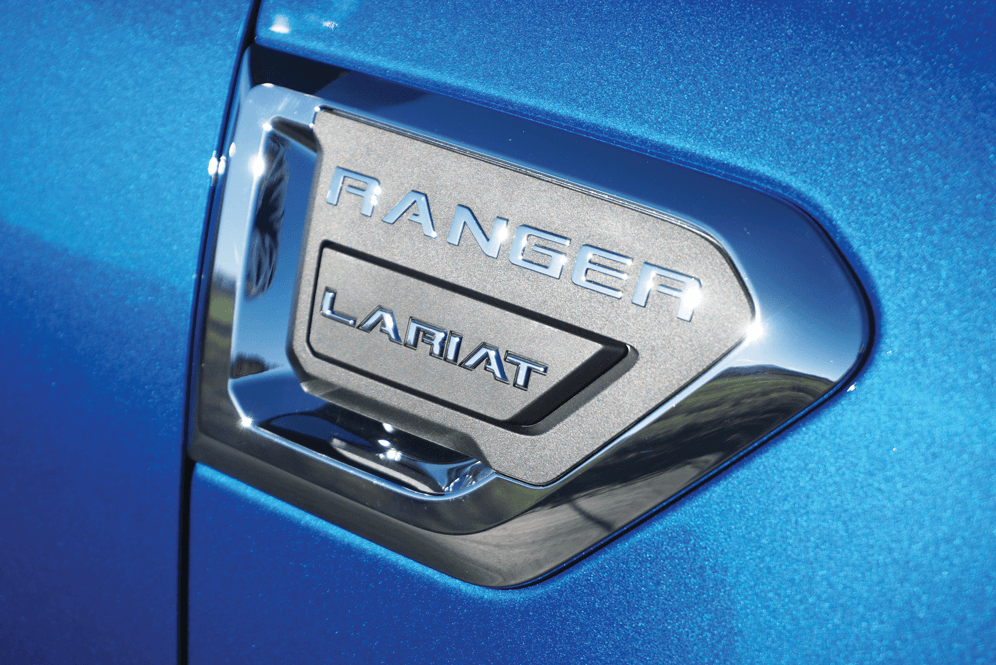
First, the trailer towing package. At $495, it’s stupid not to buy this. You’ll get a Class IV hitch receiver and a combo 7-pin and 4-pin wiring interface, and tow/haul mode on the transmission. If you don’t get the tow package, the Ranger will take a ball on the bumper, and has the 4-pin interface.


If you bought the XL trim, you can still get Co-Pilot 360 as an option. In XLT and Lariat trims you can get adaptive cruise control and navigation as the Technology Package.
As we mentioned, any Ranger can be ordered with dual-range 4WD. RVers take note: you can flat-tow the Ranger if it has 4WD by putting the transfer case in neutral.

The base 4X4 Ranger sits a little higher than the 2WD truck, but if you plan to go wheeling, you want the FX4 off-road option. This package further upgrades the suspension and adds skid and bash plates underneath. But the meat of the package is the Terrain Management system with Trail Control. Terrain management is the usual selector for sand, rock, mud, and so on. Trail Control is the magic trick, and it works like cruise control for off-road. You can set a speed up to 20 MPH in high range, or 5 MPH in low range, and the Ranger will crawl up and down steep hills, or over obstacles. All you have to do is steer.
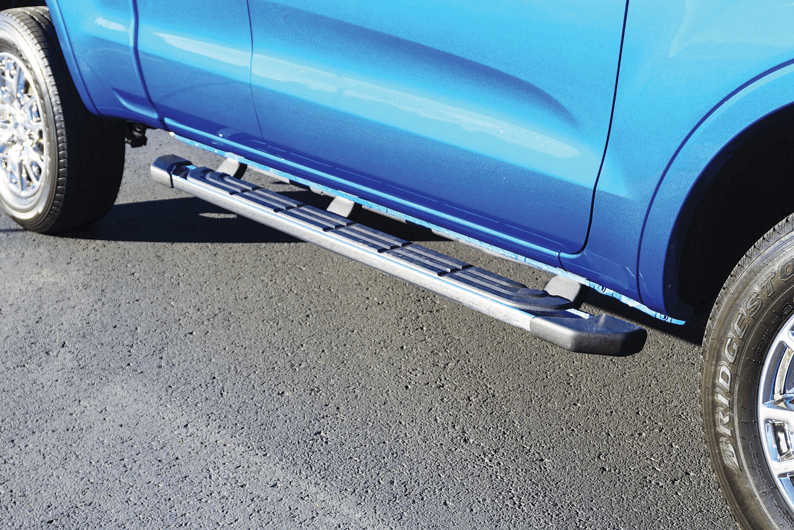
The FX4 package also comes with an electronic locking differential. This diff is available as a standalone option on all other Rangers, and the Ford engineers recommended that buyers choose it.
The new Ranger offers best-in-class payload of 1,860 pounds in the SuperCab 4X2 configuration. Choosing SuperCrew drops a few pounds, and 4X4 drops a few pounds. The 4X4 Supercrew will haul 1,560 pounds. We were happy to find that the Ranger has excellent manners when loaded—in fact, it rides better with about 1,000 pounds in the bed.
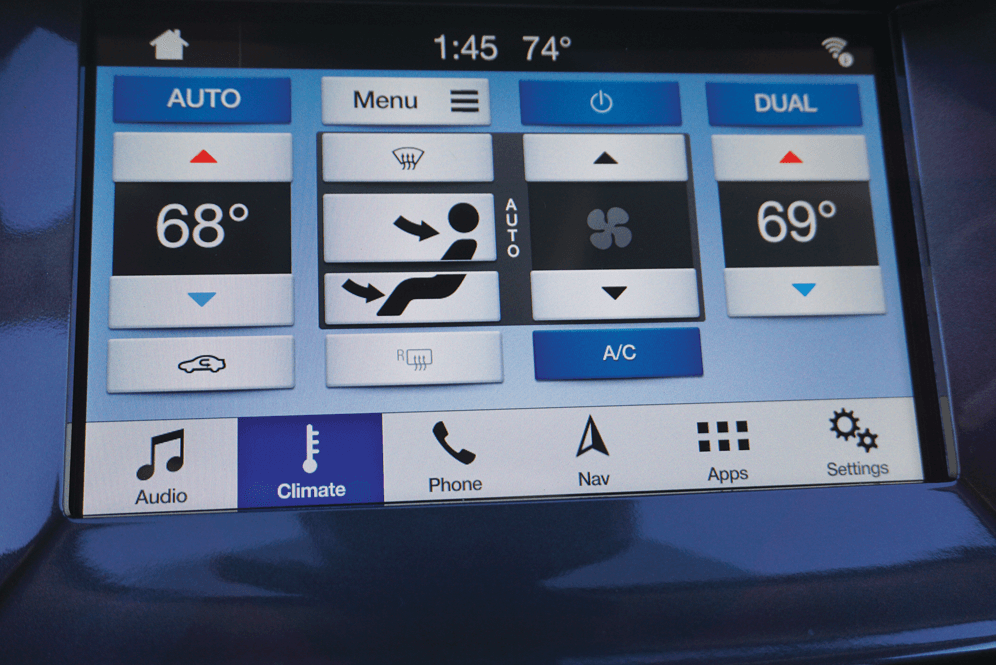


The Ranger outperforms any gas-powered competitor with a towing capacity of 7,500 pounds, assuming you got the tow package. We towed a boat at about 6,000 pounds with no trouble at all, and a lighter 3,000-pound trailer was barely noticeable. The automatic sway control just works as part of the stability control system. You don’t have to do anything to make it work.
The new Ranger is substantially different from the competition, mostly because of the engine/transmission package. You get all the power and performance whether you choose the base trim or the top trim, and that makes the Ranger a bargain if you’re looking for V-6 power at the four-cylinder price.
If you want to dude up your Ranger, you can spend up to $46,000 by checking every option box. But it’s quite possible to get your most important features for about $35,000. For example, if you get a SuperCab 4X2 Lariat, that’s $33,305 including destination fee. A 4X4 SuperCrew in XLT trim is $35,210. If you choose the SuperCab XL 4X2, and add the basic goodies and tow package, you’ll be out the door for about $28,000 and laughing all the way to the bank.

The Ranger is a good-looking vehicle, and Ford didn’t feel like they had to make it look like a Trophy Truck. Maybe next year we’ll get the Ranger Raptor they sell overseas. This year’s Ranger is just a straight-up traditional truck, with up-to-date features. Ford decided to keep it simple and make no apologies.
The bottom line is this: the 2019 Ford Ranger is a solid choice with attractive pricing compared to the other options. For years the Toyota Tacoma has been the big dog in the mid-size truck market, and the Chevy Colorado has been making a credible challenge for the last few years. Now the Ranger is here, ready to compete. It’s a good time to be a mid-size truck buyer.
Share Link